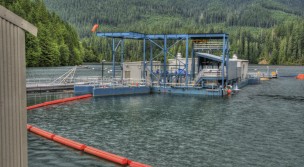

|
| Open Menu |
| Local page - | New energy menu - | Science and Technology - | Economy menu - | Food & Restaurants - | General menu |
| More classified links |
Mission of the Hydropower Program |

|

Fish-Friendly Turbine Making a Splash in Water Power |

|
The U.S. Army Engineer Institute for Water Resources (IWR) |

The Water Power Program |

The U.S. Geological Survey |
The Low Impact Hydropower Institute |
 |

The National Hydropower Association |
 |

The International Energy Agency |
The European Small Hydropower Association |

British Hydropower Association (BHA) |
 
|

British Dam Society |
 |
The International Hydropower Association (IHA) works to advance sustainable hydropower. |

The Canadian Hydropower Association (CHA) |
 |

The International Commission on Large Dams (ICOLD) |
 Association of State Dam Safety Officials |

The Association of State Dam Safety Officials (ASDSO) |
 |

The International Association for Hydro-Environment Engineering and Research |
 |

Hydrocoop is a non-profit-making organisation formed to promote international technical cooperation in dam engineering, with special focus on flood control, spillways and sedimentation. It is the outcome of a perceived need for a new approach to the issues described below. |
Clic
for your Research of books on Amazone about: The Hydro Energy |
|
Amazone : Ocean Energy - Wave Energy
- Wave Energy - Tidal energy for electric power plants
- Tidal energy for electric power plants
|
|
| Directories : | Yahoo: Energy - Hydropower MSN: Hydropower Energy Demoz: Renewable Energy - Hydro Energy - Ocean Sources |
 
Copyright WaoLine, The Internet Interactive and Dynamic Visual Directory |